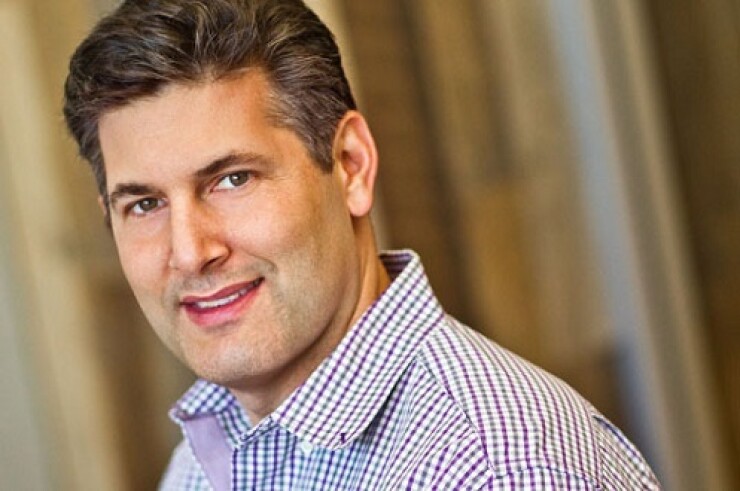
PALO ALTO, Calif. – Unlike its robo rival Betterment, the Silicon Valley-based automated investing service Wealthfront has no plans to diversify into a business-to-business model working with financial advisory firms or to venture into the 401(k) market. Nor is the online-only RIA for sale or has plans for an initial public offering anytime soon.
“The whole point is to focus on the long-term game,” says President and CEO Adam Nash. “We’re in this to build a large independent company that is 100% focused on the future. We do not want any intermediary between us and the client.”
Wealthfront isn’t interested in the 401(k) market because “it’s a great example of a B-to-B business,” Nash explains. “The purchasing decision is made by a business and not the end consumer. Wealthfront is completely focused on the direct-to-consumer model.”
MILLENNIALS KEY TO GROWTH
Millennials – and the anticipated rapid growth of their $1 trillion in assets – are the key to Wealthfront’s future, Nash says.
“We’re very focused on young investors in their 20s and 30s,” he explains. “This is very much a long-term bet on the economic success of that generation, and what the path of those investors will look like over the next 20 to 30 years.”
In an interview with Financial Planning last year, Nash cited Charles Schwab’s success with providing financial services for Baby Boomers as a model for what Wealthfront hopes to do for Millennials.
In his latest interview, Nash made frequent references to such Silicon Valley success stories as LinkedIn, Netflix, Facebook and Apple, noting their emphasis on rapid technological changes, continual introduction of new features, a focus on consumers, software design and long-term outlook.
“They pushed the limits of innovation and what’s possible with technology,” Nash points out. Wealthfront, he adds, aspires to do the same for financial services.
“The industry doesn’t need new companies to do the same things,” he says. “Wealthfront exists to be different.”
INDUSTRY REALIGNMENT
To be sure, the entire digital marketplace has seen major changes over the past year.
Charles Schwab and Vanguard introduced their own automated investing services (Schwab’s at no cost to the consumer); BlackRock bought FutureAdvisor; Northwestern Mutual bought LearnVest and Betterment began offering a 401(k) platform to businesses while its institutional division focused on striking white label deals with advisory firms.
The new entrants to the digital market and its expansion to advisors validate Wealthfront’s vision, Nash asserts.
“It shows Wealthfront isn’t the only company saying this is going to be a big, important market,” Nash continues. “We’ve seen a huge movement of an automated tech platform to augment existing advisors, and I don’t think that Schwab or BlackRock will be the last companies to enter the business.”
WEALTHFRONT PLAYBOOK
Wealthfront, meanwhile, slashed its minimum account size to $500 from $5,000, lifted fees on accounts with less than $10,000 (accounts with more pay 0.25%), widened access to its tax-loss harvesting service and introduced a direct indexing investment option and an automated broker transfer system.
The online RIA also accelerated its single stock diversification service, targeted at Silicon Valley employees who have a large stock position with their employees and want to diversify.
The nearly four-year-old company reached $2.6 billion in assets under management in 2015, serving over 40,000 clients with an average account size of around $80,000. In the past year Wealthfront has also raised over $60 million to reach nearly $130 million in funding from investors.
It has made a number of high-profile hires as well, including new CFO Ashley Johnson, known for her Silicon Valley capital raising expertise and former Facebook executives Alison Rosenthal as vice president of strategic relations and Kate Aronowitz as vice president for design.
EXPENSIVE HIRES
Nor has Nash let up on bringing in high quality software engineers to the company’s new 10,000-square-foot open space office in the heart of Silicon Valley.
“These are engineers who would otherwise be working for Google or Facebook,” Nash says. “Some people ask what would happen if Google or Facebook entered this market. That’s how Wealthfront is approaching the business. We’re doing what they would do as a disruptive data and software-driven company.”
High-powered Silicon Valley executives and engineers don’t come cheap, however, and industry analysts (and traditional advisors) are quick to note that robo firms like Wealthfront and Betterment are burning through cash and will need many more billions in AUM to be able to become profitable.
HOW FAR FROM BREAK-EVEN?
Morningstar estimates that the break-even client asset level for robo-advisors is from $16 billion to $40 billion, eight to 20 times their current AUM levels, and that Wealthfront would need to spend from $60 million to $150 million in advertising to reach that AUM goal.
A recent Cerulli Associates report estimates what it calls “eRIAs” will need to grow approximately 50% to 60% per year for the next six years “to remain a standalone direct channel for consumer business.
Nash doesn’t disagree.
“I think their conclusion is correct,” he says. “If they want to become large, independent companies in this market, companies have to be differentiated, grow rapidly and be cost effective. That describes what Wealthfront is doing.”
But what about all those costly software engineers sucking up Wealthfront’s cash?
“Businesses have control over costs,” Nash responds. “The people here now are not necessary to the business today. They are here to build the business for tomorrow.”
WILL PATIENCE PAY OFF?
That long-term view is supported by Wealthfront’s investors, led by venture capital firms like Spark Capital, which has also invested in Twitter and .
“The biggest gift you can be given when building a business is the ability to optimize long-term economic value,” Nash says. “That’s why Silicon Valley exists. The most valuable companies owe their existence to long-term patient capital.”
What about profitability?
“I think you’ll find that most sophisticated venture investors focus on numbers like unit margin and scale,” Nash says. “We have every confidence we can build a phenomenally profitable business at scale.”
Read More:





